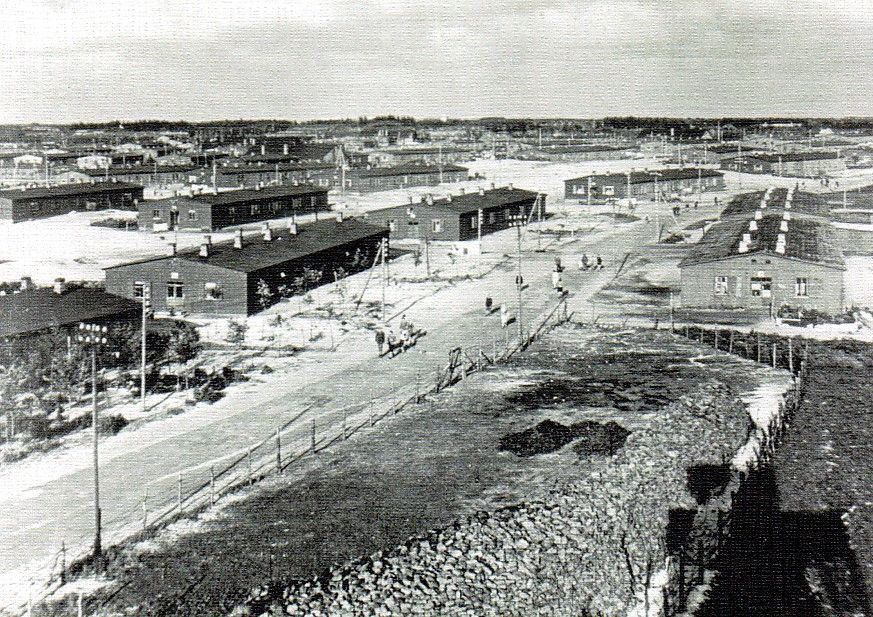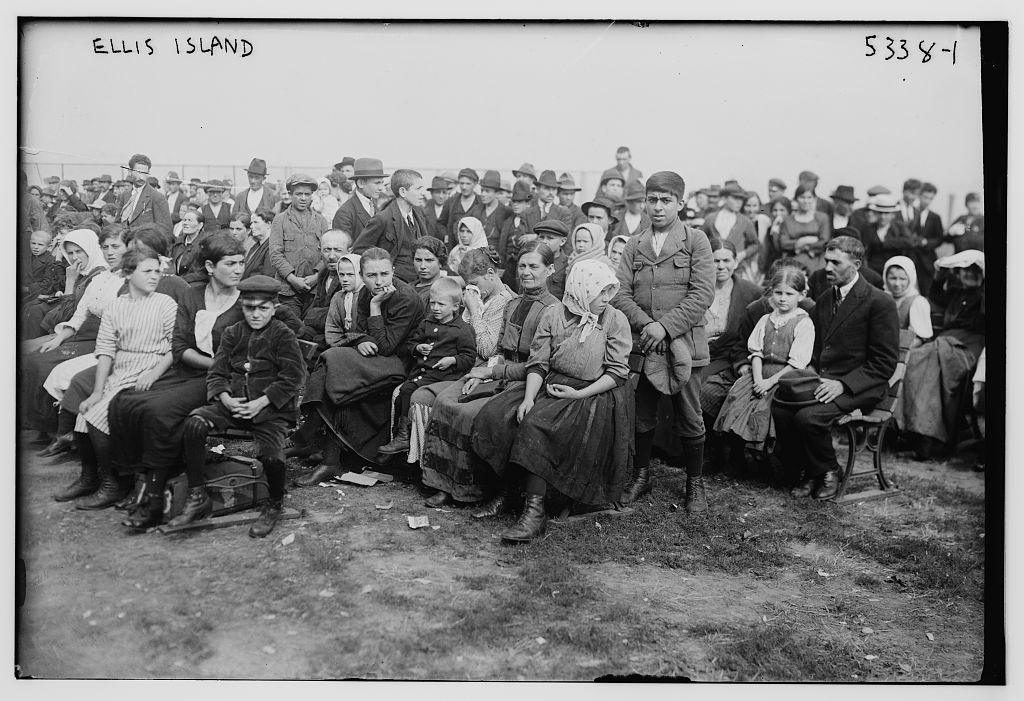"...we risk becoming an island of strangers, not a nation that walks forward together": UK Prime Minister Starmer, May, 2025, in his White Paper describing planned curbs on immigration.
In June of this year anti-immigrant riots broke out in Northern Ireland in the town of Ballymena. According to a CBC report"...5,000 of the 31,000 residents were born outside of Britain, Ireland or Northern Ireland". https://www.youtube.com/watch?v=gSC66ZmoHHs
In May of 2024, the Copenhagen Post reported that 15 EU member states, led by Denmark, ..."issued a joint call to prevent migrants from arriving at EU borders..."
In September of 2024, the new French Foreign Minister Bruno Retailleau announced the goal of toughening border controls and imposing prison sentences on those who enter France illegally. Additionally, Retailleau described plans to strike a deal with North African nations to keep immigrants in Africa so that they could not cross into France in the first place.
In March of this year, French police evicted a group of approximately 400 immigrants who had been squatting in a Parisian cultural center. Demonstrators outside reflect the divisions in France over the immigrant issue. This YouTube video offers one view of the event. https://www.youtube.com/watch?v=LA6-RZ6QsPs
And the US...there is a formal quota of 3000 immigrant deportations a day. Additionally, the borders to the U. S. have essentially been closed to new immigration.
This YouTube video offers a glimpse of ongoing protests in the U.S. over the Trump Administration's mass deportations of undocumented immigrants. https://www.youtube.com/watch?v=H7jyx8Hggl0
When speaking of national identity, how do we define ourselves? Who are we? Every nation certainly has a right, indeed an obligation, to act in its best interest. Sometimes the threat to national interest is clear--an armed invasion by an external force, for example. Sometimes that threat is not so clear. Immigration is one of those issues where the perceived threat to national identity varies by perspective and by circumstance.
Each of the four nations cited above at one time welcomed immigrants in large numbers. Both the UK and France welcomed immigrants after WWII.
Philippe Rygiel, of the Université Paris I Panthéon-Sorbonne/CNRS wrote in the The Encyclopedia of Global Human Migration (2013)
In march 1945, Charles de Gaulle, then head of the french government told the national assembly that France needed to introduce, with care (...), desirable immigrants into its midst, in order to rebuild the country and rejuvenate an aging population
In one of a series of articles published by Euronews, we learn of a France devastated by WWII. An estimated 400,000 buildings were destroyed and another 2,000,000 damaged. Infrastructure and agriculture were decimated. There was not enough food and no way to efficiently deliver whatever food there was to people that needed it.
Destruction in Brest, France, 1945
 Ray Claxton. Public domain.
Ray Claxton. Public domain.
Immigration was the solution. France made it easy not only to immigrate but also to become a French citizen. Returning to the previous cited article by Phillipe Rygiel, the author states
The “ordonnances de 1945” created a state driven and controlled system of mass immigration that... recognized the right of most foreign workers, after a few years of stay, to sojourn permanently in France, opened access to citizenship to most of them and made most of their children french.
The UK likewise found itself, after WWII, in dire need of reconstruction. More than 2,000,000 homes needed to be rebuilt. 100,000 people were homeless in Belfast alone.
Liverpool, 1942, After German Blitz Bombing
 UK Ministry of Information Photo Division. Public domain
UK Ministry of Information Photo Division. Public domain
There simply was not enough domestic labor to do the work. In 1948 the UK passed the Nationality Act, which gave immigrants from the widespread Commonwealth the right to live and work in the UK permanently. These people were already citizens of the United Kingdom and Colonies. These workers filled jobs that others could not fill and they became essential to post-war recovery.
Denmark's record in WWII stands apart from that of other European nations. It had signed a non-aggression pact with Germany before the war, which Germany promptly violated when the war started. When Germans invaded, the Danish government decided not to resist and until 1943 Germany occupied Denmark with relative ease. However a domestic resistance movement had developed and after 1943 the German occupation became more oppressive. Still, the country did not suffer the physical losses or even population losses experienced by the UK and France. After the war, though, Denmark opened its doors to several hundred thousand refugees from Germany who were fleeing the advancing Soviet army.
Refugee Camp in Oksbøl, Denmark, 1945
 Unknown Author. Source:Leif Guldmann Ipsen: Menschen hinter Stacheldraht. Blavandshuk Egnsmuseum. Public domain.
Unknown Author. Source:Leif Guldmann Ipsen: Menschen hinter Stacheldraht. Blavandshuk Egnsmuseum. Public domain.
Throughout the decades that followed, Denmark became a leader in offering humanitarian assistance to refugees from various global conflicts.
As for the U.S., WWII was largely fought abroad. The war actually represented a boon to the U.S. economy. It is even credited by some historians as being the push that put an end to the Great Depression. Immigration law, which in the U. S. had a history of being restrictive, was not much affected.
Over the years, throughout the country's history, the flow of immigrants to the U.S seesawed to regulate the numbers of people coming from different parts of the world. Historically this seesaw reflected national attitudes about race and national origin. All my ancestors were immigrants. In the early years this represented an open immigration policy (1600s,1700s, 1800s my paternal ancestors, northern Europe). In later years it reflected a more regulated policy (1906, my maternal ancestors, Sicily).
Immigrants at Ellis Island (Point of Entry in U.S), 1900
 Bain News Service, publisher. Source: Library of Congress. Public domain
Bain News Service, publisher. Source: Library of Congress. Public domain
Restrictive immigration in the U.S. had begun in earnest in 1888 with the Chinese Exclusion Act...passed in response to Chinese immigrants who had come to the West Coast of the U.S. to help build the railroads. In 1924 restrictive immigration reflected a desire to keep out immigrants from southern Europe (my ancestors). In 1965, in yet another effort to control the type of immigrant allowed into the U.S., a law was passed that limited immigration from Latin America. This seems to have been the impetus for many undocumented immigrants from Latin America to come in as unskilled manual laborers. People continued to come over the border despite regulations.
Today Today the four countries mentioned (and others across Europe) find themselves in a position of backlash against former immigration policies. Public sentiment against immigrants has swayed elections. Why?
Many answers to that question have been offered. I did a little reading to get an objective perspective on the issue. In the next few paragraphs I'll describe some of what I found.
An article (2020) published by Cambridge University Press entitled Terrorism and Migration: an Overview notes a relationship between the incidence of terrorist attacks and enactment of restrictive immigration policy. A relationship is not established (or is minimally detected) between the presence of immigrants and terrorist events. In other words, having more immigrants does not strongly correlate with having more terrorist attacks. However, having more terrorists attacks does strongly correlate with reducing immigration.
Thus, a rise in terrorism, or fear of terrorism, leads to a fear of and resistance to immigration.
A 2023 article in the Journal of International Migration and Integration correlates resistance to immigrants with a rise in nationalism. The authors write, "Nationalist sentiment is a driving force influencing negative attitudes towards immigrants..." 'Cultural patriotism' also correlates strongly with resistance to immigrants. The authors suggest (as a result of their research) that those who have a heightened sense of nationalism and cultural patriotism fear those values will be eroded by immigrants who do not share them.
Yet another article, by the European University Institute (Migration in European History), suggests that the rosy picture of post-WWII immigration reflected at the beginning of this blog is false. Immigration was never smooth. Populations that arrived were not integrated easily into society.
In describing labor migration from southern Europe to northern Europe in the decades following WWII, the authors write:
For a long time, the emphasis on the north-south divide of the labor recruitment has blocked other perspectives. Seen from a distance, it is certainly a common European experience, with repercussions to almost all European nations. All European receiving countries watched the establishment of diasporas, all European sending countries watched the investment of remittances and return migration, and both developments are part of the same process.
There is a particularly vile video I came across that illustrates the disdain northern Italians held for southern Italians, particularly Sicilians. Don't watch this if you are easily offended. I think I can safely say this narrator, in addressing immigrants from the south, demonstrates an egregious instance of cultural patriotism. https://www.youtube.com/watch?v=deMk0h8JbP8&t=3s
The article by the European University Institute also addresses specifically the immigration of immigrants from former French and English colonies in the decades after WWII. The introduction of these immigrants was not as seamless as some sources suggest. While the labor of the immigrants was needed, the receiving populations were not always gracious.
A...common feature is the difficult memory of...repercussions like the establishment of anti-immigrant extremist political parties and the challenges of ethnic diversity...into the historical narrative of the nations concerned.
Immigration is one of the most powerful political issues of our time. It has always apparently been an issue in politics and culture. It is also true that nationalism as a global movement is shaping the political character of many nations today, including the in U.S. and the three western European nations described in this blog.
Maybe the question should be not only why is immigration so important to people, but also why has nationalism grown to be so powerful? It may be that nationalism is driving the immigrant issue as much as anything else.
Conclusion
There you have it--another blog that has more questions than answers. Maybe in asking questions and thinking seriously about the issue we might better understand how we feel about it and why it drives so much of the current political and social discourse. I hope so.
Thank you for reading my blog. Peace and health to all.